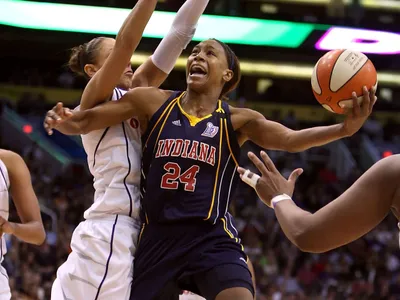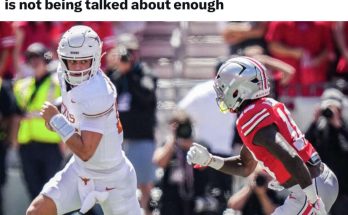The Indiana Fever, based in Indianapolis, Indiana, is one of the proud franchises of the Women’s National Basketball Association (WNBA). Known for their passionate fanbase, competitive spirit, and commitment to excellence, the Fever have played a significant role in the development of women’s professional basketball in the United States. From their inception in 2000 to the present day, the team has experienced a journey full of highs and lows, shaping the identity of women’s sports in Indiana and beyond.
The team is a member of the WNBA’s Eastern Conference, a division filled with teams that represent some of the most storied franchises in women’s basketball. The Fever’s history is rich with remarkable achievements, notable players, and an ongoing commitment to advancing the game of basketball for women. But more than just a sports team, the Indiana Fever represents the evolution of the WNBA and its mission to create opportunities for women in sports.
Origins of the Indiana Fever
The Indiana Fever was established in 2000 as one of the eight expansion teams that entered the WNBA at the turn of the century. The team was the result of a growing interest in women’s professional basketball, and the Fever were brought into existence to help the league expand and gain more mainstream visibility. They were one of the four teams that entered the league as part of an expansion project designed to make the WNBA a more national competition. The Fever played their first season in 2000 and quickly established themselves as a competitive force in the league.
The Fever’s team name and colors were chosen to symbolize the region’s passionate basketball culture, something that has been ingrained in the people of Indiana for generations. The “fever” was a nod to the intense enthusiasm that Hoosiers, as Indiana residents are known, have for basketball. Basketball is almost a way of life in the state, and this cultural connection made the Fever an appropriate name for the new franchise.
The Fever’s home court is the Gainbridge Fieldhouse (formerly known as Bankers Life Fieldhouse), a state-of-the-art arena in downtown Indianapolis that has been the home of the Fever since their inception. The venue has played an integral role in the team’s connection to the community, with fans packing the arena for big games and offering unwavering support, regardless of the team’s win-loss record.
Early Years: Struggles and Growth
Like many expansion teams, the early years for the Indiana Fever were marked by growing pains. The team struggled to find its footing in the WNBA, with inconsistent performances both on the court and off. While the Fever had some individual standouts and a solid roster, they struggled to consistently make the playoffs in the early seasons.
Despite these struggles, the Fever developed a reputation for being a gritty and hard-working team. They prided themselves on resilience, pushing through tough games and creating a brand of basketball that was known for its tenacity, defense, and team-oriented play. This work ethic became a hallmark of the franchise and served as a foundation for future success.
During these formative years, the Fever built a solid fanbase in Indiana. Though the team struggled to consistently compete for championships, their fan engagement was always strong. Local communities rallied behind the Fever, especially during moments of success, such as making the playoffs or achieving personal milestones for players.
The 2010s: A Golden Era
The 2010s marked the beginning of the most successful period in Indiana Fever history. After years of incremental growth and team-building, the Fever made a major leap forward under the leadership of head coach Lin Dunn. Dunn took over as head coach in 2008 and began molding the Fever into a championship-caliber team. Dunn was known for her strong coaching acumen and her ability to make the most out of her players’ strengths.
The Fever’s greatest achievement came in 2012 when they won their first and only WNBA Championship. This victory was the culmination of years of hard work, and it firmly cemented the Fever’s place in the history of the league. The 2012 championship run was led by several key players, including Tamika Catchings, one of the greatest women’s basketball players of all time. Catchings, the heart and soul of the team for over a decade, was named the Finals MVP after a dominant performance throughout the postseason.
Catchings’ leadership and all-around game were integral to the Fever’s success in 2012. As a versatile forward known for her scoring, rebounding, and defense, Catchings had an immense impact on both ends of the floor. Her ability to lead by example, motivate her teammates, and take over games in critical moments made her the franchise’s most iconic player.
In addition to Catchings, the Fever roster also featured players like Katie Douglas, Briann January, and Shavonte Zellous, who played crucial roles during the team’s championship run. This strong supporting cast, combined with Dunn’s coaching philosophy, helped create a team that was tough, well-coached, and determined to win.
Despite their championship success, the Fever were unable to repeat in subsequent years. However, the 2012 championship remains a proud moment in the franchise’s history. The team continued to remain competitive in the following years, frequently making playoff appearances, but they never captured another title.
The Present: Rebuilding and Renewed Hope
In recent years, the Indiana Fever have faced a period of rebuilding. After the retirement of Tamika Catchings in 2016, the franchise entered a new phase, looking to develop a new core of players who could lead the team to future success. While this rebuilding process has been challenging at times, it has also been a time for the Fever to focus on player development and build for the future.
One of the key moves during this phase was the acquisition of young talents through the WNBA Draft. Players like Teaira McCowan, who was drafted in 2019, have been part of the new generation of Fever players who have the potential to lead the team back to championship contention. McCowan, a standout center with impressive size and skill, has become a focal point of the team’s efforts to rebuild and re-establish their competitive edge.
The team’s leadership has also evolved with new coaching changes. In 2020, the Fever hired Marianne Stanley, a highly experienced coach who had a long history of success in women’s basketball. Stanley’s arrival brought new energy and strategies to the team, and she has been instrumental in helping develop the team’s younger players.
Despite some tough seasons, the Fever’s core group of players and the team’s fanbase remain hopeful. With continued player development, smart roster moves, and strong coaching, the Fever are positioning themselves to return to the upper echelon of the WNBA in the near future.
Community Engagement and Impact
Beyond their performance on the court, the Indiana Fever have made a significant impact in the community. The team has long been dedicated to empowering women and girls through basketball. Their community outreach programs, including youth basketball clinics and mentoring initiatives, have helped inspire a new generation of female athletes in Indiana.
The Fever have also been involved in various social justice efforts, promoting equality and advocating for causes that are important to their players and fans. This commitment to social responsibility is an important aspect of the franchise’s identity and has helped strengthen the bond between the team and its supporters.
The Fever’s fanbase, while smaller than some of the league’s larger markets, is incredibly loyal and passionate. Whether it’s in the stands at Gainbridge Fieldhouse or online via social media, Fever fans remain a crucial part of the team’s identity. The team’s popularity has continued to grow, particularly among younger fans who are excited to see the next wave of talented players come through the ranks.



